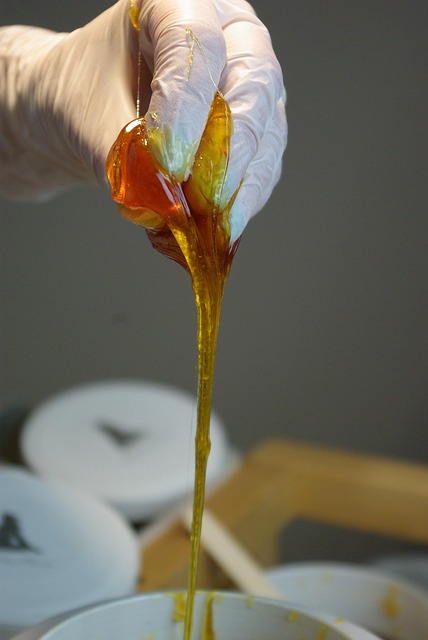Understanding different types of stains is crucial for effective removal. This involves distinguishing between surface and deep stains, and knowing which treatments work best – enzymatic cleaners for organic stains or acid-based solutions for others. Common household items like baking soda, vinegar, and hydrogen peroxide offer natural yet powerful solutions. Enzymes provide a safe and eco-friendly approach, while heat enhances cleaning power. Preventing stains through regular care and maintenance is key. Delicate fabrics require gentle techniques, and DIY kits should be assessed for effectiveness. Specialised products from professional cleaners offer superior results for tougher cases.
Looking for effective stain removal solutions? Stains can be a nuisance, but with the right approach, you can restore your fabrics and surfaces to their original state. This comprehensive guide explores various methods to tackle different types of stains, from common household cleaners to natural eco-friendly solutions. Discover the science behind enzymes and heat, learn prevention tips, and find out if DIY kits are a worthwhile investment for efficient stain removal.
Understanding Different Types of Stains

Understanding different types of stains is crucial for effective stain removal. Stains can be broadly categorized into two main groups: surface stains and deep stains. Surface stains, like those from food or beverages, typically sit on top of fabrics or surfaces and can often be removed with common household cleaners or simple solutions of warm water and mild detergent. On the other hand, deep stains have penetrated deeper into the fabric fibers, making them more challenging to eliminate. These might include ink, grease, blood, or rust stains that require specialized treatments.
Knowing the type of stain you’re dealing with is essential for selecting the right stain removal solution. Different stains respond differently to various cleaning agents. For instance, enzymatic cleaners are effective against organic stains like blood and sweat, while acid-based solutions might be needed for removing ink or rust. Understanding these variations enables homeowners and professionals alike to approach stain removal more efficiently, ensuring optimal results with minimal effort and resource wastage.
Common Household Cleaning Products for Stain Removal

When it comes to tackling stains, many people turn to common household cleaning products that offer effective stain removal solutions. These everyday items are readily available and often cost-effective, making them a go-to for quick clean-ups. One such staple is baking soda, which has natural abrading properties and can be used to lift stains from various surfaces, including carpets and clothing. Another versatile product is vinegar; its acidity helps break down grease and grime, making it ideal for removing stubborn marks on countertops or floors.
Moreover, liquid dish soap is not just for washing dishes. Its surfactant properties make it an excellent choice for removing oily stains and greasy residue. Many people also swear by the power of hydrogen peroxide, which acts as a natural bleach and can effectively eliminate stains without harsh chemicals. These simple, yet effective, household items demonstrate that achieving stain-free results doesn’t always require specialized or expensive products.
Natural and Eco-Friendly Solutions

Many modern stain removal solutions come in the form of powerful chemicals, but for those seeking natural and eco-friendly alternatives, there are numerous options available. These methods often utilize common household ingredients known for their cleaning prowess while minimizing environmental impact. Baking soda and vinegar, for instance, are popular choices for tackling various stains; their gentle yet effective nature makes them ideal for sensitive fabrics and surfaces.
Plants and herbs also offer natural stain removal benefits. Turmeric, known for its vibrant color, acts as a powerful natural dye and disinfectant, while lemon juice can lighten and refresh fabric and remove stubborn stains. These eco-friendly solutions not only reduce the use of harsh chemicals but also contribute to a more sustainable approach to household chores, appealing to those conscious of both their health and the environment.
Using Enzymes for Persistente Stains

Enzymes, nature’s powerful cleaning agents, offer a revolutionary approach to stain removal. These protein catalysts work like a dance, breaking down stubborn stains into smaller, manageable components. Their unique ability to target specific organic compounds makes them highly effective against a wide range of stains, from grass and wine to mud and blood.
In the realm of stain removal, enzymes act as game-changers, particularly for persistent stains that traditional methods struggle with. They penetrate deep into fabrics and surfaces, dissolving the molecular bonds holding stains together. This gentle yet powerful action ensures effective stain elimination without causing damage or leaving behind harsh residues, making them a preferred choice for those seeking eco-friendly and safe cleaning solutions.
The Role of Heat in Stain Elimination

Heat plays a pivotal role in effective stain removal, especially for stubborn and deep-seated stains. The application of heat helps to break down the chemical bonds that hold stains in place, making them more susceptible to being washed away. This is particularly useful for removing marks from fabrics, carpets, and even hard surfaces like kitchen countertops.
When heat is applied, it causes the stain’s molecules to vibrate faster, increasing their energy and causing them to separate. This process facilitates the penetration of cleaning solutions, enhancing their effectiveness. For instance, steaming is a popular method that uses hot steam to loosen dirt and stains, allowing for easier extraction. In many cases, combining heat with the right detergent or cleaning agent can be a powerful stain removal solution, ensuring a deeper clean and improved fabric care.
Stain Prevention: Best Practices and Tips

Preventing stains is often easier and more effective than trying to remove them later, making it a key part of any stain removal strategy. Regular cleaning and maintenance can significantly reduce the number of stubborn marks on your fabrics and surfaces. Start by understanding the type of fabric you’re dealing with; different materials require specific care. For instance, natural fibers like cotton or wool absorb dyes easily, while synthetic fabrics may be more resistant to staining.
Regularly spot-clean items, especially those that come into contact with food, drinks, or other common stain-causing substances. Use appropriate cleaners and treatments tailored to the fabric’s needs. For example, pre-treating stains with a mild detergent or specific stain removers before washing can make removal easier. Additionally, protecting delicate fabrics by covering them when not in use or storing them properly can prevent accidental staining.
Handling Delicate Fabrics and Surfaces

When it comes to stain removal, delicate fabrics and surfaces require a special touch. Regular cleaning methods might damage or discolour sensitive materials like silk, wool, or antique furnishings. For such cases, understanding the fabric’s composition is key. Using water-based solutions or mild detergents specifically designed for delicates can help preserve their structure.
Gentle cleaning techniques, such as spot-treating with a soft cloth dampened in the appropriate solution, are ideal. Avoid aggressive scrubbing or high-pressure washes that can stretch or fade delicate fabrics. For surfaces like wooden furniture or vintage carpets, opt for dry cleaning or specialised stain removal services to ensure no residue is left behind, preserving their beauty and longevity.
DIY Stain Removal Kits: Are They Worth It?

DIY Stain Removal Kits have gained popularity due to their accessibility and potential cost-effectiveness. These kits, often found in grocery stores or online, promise convenient solutions for various stain removal needs. However, the effectiveness of these DIY options can vary greatly. While some kits are well-formulated and capable of handling common stains, others may fall short, especially on more stubborn or unique marks.
Before reaching for a DIY kit, consider the type, age, and severity of the stain. For minor everyday spills, these kits can be a practical choice. But for tougher stains, especially on delicate fabrics or hard-to-reach areas, it might be wise to invest in specialized products designed by professional cleaners.
